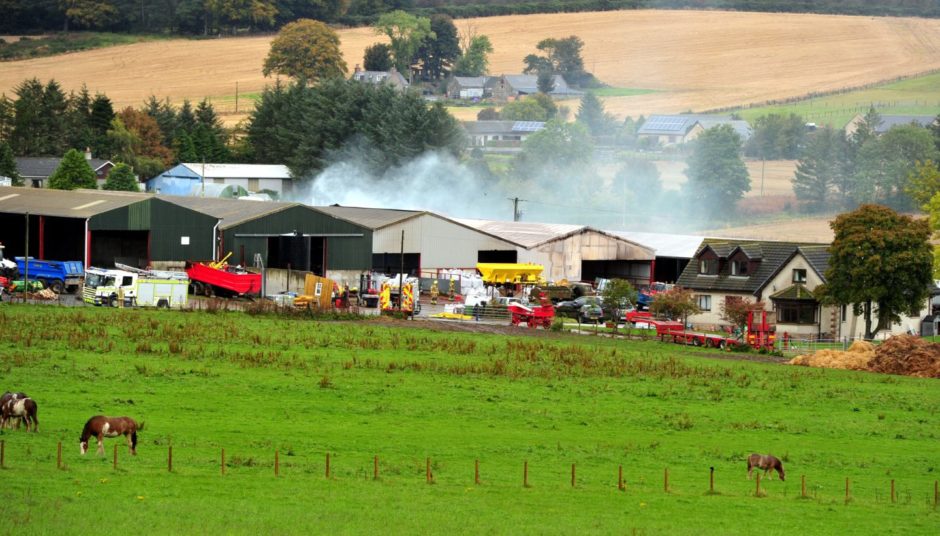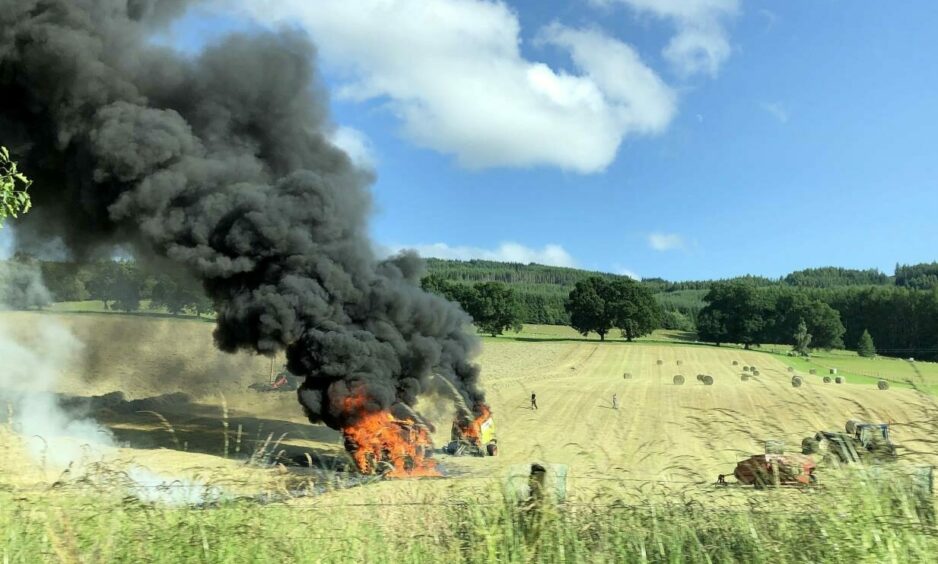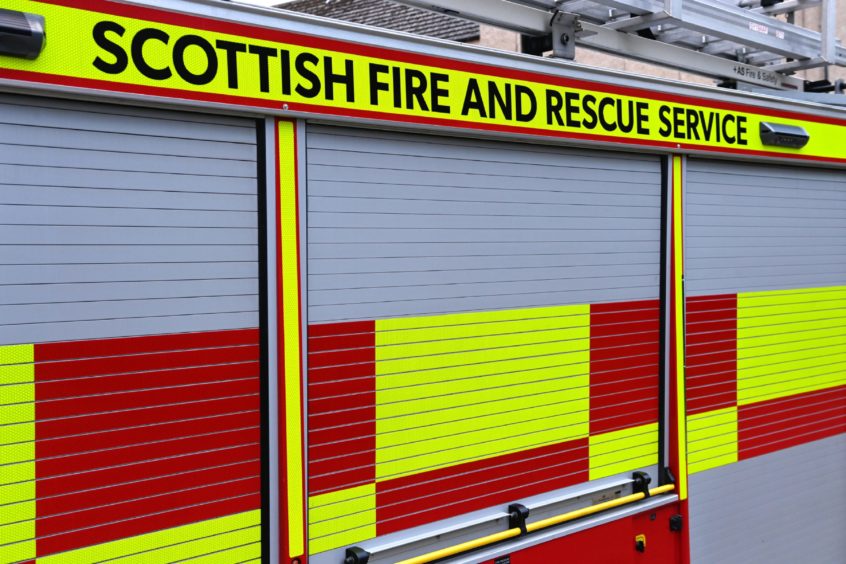Farmers have been urged to step up their fire prevention and control plans as new figures show farm fires cost the UK industry more than £69 million in 2020 – a rise of 40% in a year.
In Scotland alone the cost was up 19% to £3.3 million, and fires in agricultural vehicles cost the industry an additional £20 million.
According to NFU Mutual, which insures around 75% of UK farms, electrical faults were a major cause, and it blamed extreme weather and dry conditions for adding to the problem.
However the insurer revealed that fires involving biomass boilers are an “alarming new trend”, although it pointed out that servicing and waste disposal procedures can help mitigate risks.
Arson also remains a major issue for the industry and in the top five causes of farm fires, although cases are down on the all-time high of 2019.
The insurer said fire spreading from electrical cabinets underlined the importance of regular inspections by competent professionals. It has also appealed to farmers to fit accredited fire suppression systems on vehicles such as combines, and offered discounted premiums as an incentive.
Some insurance policies already have mandatory requirements relating to electrics and ventilation.

Evita Van Gestel, of NFU Mutual’s risk management service, said most fires were preventable by routine maintenance and regular inspection of heating systems, electrical installations and machinery, and controlling hot works such as welding, cutting or grinding in farm workshops.
She urged all farmers to have an emergency plan in place to protect everyone who might live on or visit the farm.
She said: “Farm fires put lives at risk as well as causing devastating damage and putting the future of farm businesses under threat.
“Farmers are currently under huge pressure to keep the country fed and adapt their businesses to changes in agriculture, so regularly reviewing your fire risk assessment and acting on your findings is vital to reduce the risk of seeing the fruits of your hard work going up in smoke.
“Implementing and maintaining good standards of housekeeping, particularly around the storage of combustibles and flammables such as hay, straw and fuels, will also reduce the risk of a fire spreading.”
Fire safety tips
- Have a plan in place – Put people at the heart of your fire plan and ensure everyone on site knows what to do in the event of a fire. The biggest priority is to evacuate everyone safely including people working in or living around the premises, particularly those especially at risk and who may have disabilities.
- Don’t mess with electrics – Electrical faults are a major cause of fire whilst electric shock can cause death or severe injury. Don’t try and attempt electrical work yourself and always use a qualified and competent electrician for work and inspections. DIY modifications, hostile conditions (such as wet, damp or acidic atmospheres), rodents, overloaded sockets and simple wear and tear are common causes of electrical fires on farms.
- Suppress the risk – suppression systems are a major game changer for the industry and play a critical role detecting, containing and extinguishing fire. Whether you have a biomass boiler or a combine harvester, working in hot, dry conditions, fire suppression systems can save lives and property.
- Keep on top of your housekeeping – Good housekeeping is absolutely essential to ensure materials and machinery are stored correctly and to eliminate dust and debris. The build-up of waste and materials is not only flammable and potentially explosive, it can block escape routes and cause trip hazards in an emergency.
- Control hot work – Welding, cutting or grinding equipment, along with blow lamps and blow torches can produce sparks which spread quickly. If work can’t be done outside, ensure you are in clear, open area and far away from combustible materials. Anyone carrying out hot works on your farm should be subject to a strict ‘Permit to Work’ system.
If a fire breaks out:
- Call the Fire and Rescue Service without delay.
- Only attempt to fight the fire if i is safe to do so and using the correct and maintained extinguishers.
- Prepare to evacuate livestock, only if safe to do so if the fire spreads.
- Prepare to use farm machinery to assist the Fire and Rescue Service.
- Ensure you can direct emergency services to the exact location of fires e.g. download the what3words app which pinpoints specific 3m x 3m locations
- Send someone to meet and direct the Fire and Rescue Service to the fire.
- Ensure the farm entrance is clearly signed and access kept clear to allow Fire and Rescue Service access.


